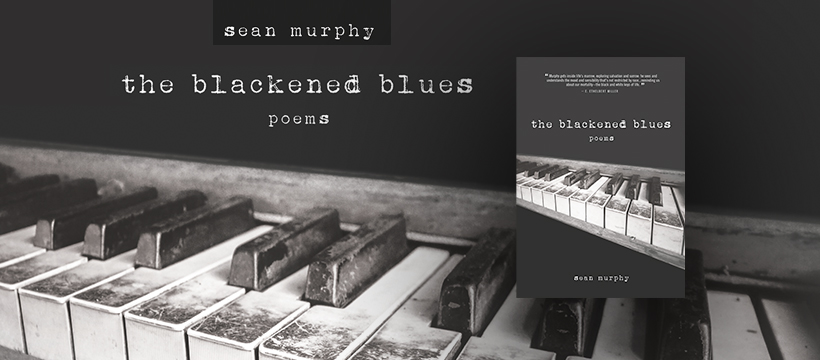
I’m happy to announce that my first poetry collection, The Blackened Blues, is available wherever you buy books (yes, *wherever*, so you don’t have to put more money in Rocket Man’s pocket; you can go directly to my publisher, Finishing Line Press, or support my pals (and 1455 partners) at D.C.’s The Potter’s House).
THE BLACKENED BLUES is part of a large and ongoing project that discusses (and celebrates) some of the author’s personal heroes who remain far less celebrated than they deserve to be. As it happens, many of them are musicians, hampered in various ways by discrimination, ranging from old fashioned racism to institutional and cultural indifference. Though there’s an elegiac sadness suffusing these poems, there’s also acknowledgment of defiant genius: they fought their battles bravely, in their art and in their lives. This collection seeks to capture something (or, hopefully, more than a few things) essential about their lives, bearing witness while also paying homage.
I’d like to introduce the collection, one poem at a time (in the order they appear in the book), and tell a little bit about the inspiration for each, by way of explanation and in tribute.
Next up is “Jake LaMotta’s Rage.”
I have the opportunity, here, to explore and interrogate (among many other things) male toxicity, violence, fighting, brutality, sexism, denial, exploitation, and not least, rage. But in truth, this entire poem was inspired by the movie Raging Bull (in general) and “the scene” (in particular — the scene being the almost unwatchable sequence when Jake, at long last, winds up in jail and has nothing but the literal concrete wall in front of him, after battling through the other walls he’s constructed, to survive and excel, throughout his life; it’s too brutal to share, but if you’ve seen the movie, you know the scene), and the impetus for this piece of writing was, in some modest and genuine way, paying tribute to what I believe is one of the most staggeringly beautiful, sad, elegiac, perfectly rendered scenes in Martin Scorsese’s oeuvre.
Jake LaMotta’s Rage
A boxer’s fury must be cultivated, surely.
But the best ones are fed the same way
as silent calves enclosed in iron pens:
the grain funneled by force, a practice
perfected by centuries of risk vs. reward
and, always, money. Through this process—
capricious but productive, with perfect specimens
churned out like the livestock they are—choking
as they must on what they’re made to swallow,
fed for precision and a finite time to thrive
before an abrupt and brutal abrogation (the only
merciful thing they’ll ever experience), any fighter’s
endgame in reverse: an ever-after orgy for those senses
deprived for so long, all in service to a science
that starts sweetly than sours, ostensibly overnight.
Broken down and no longer especially useful,
bruised fists soaking in filthy ice, scarred eyes surveying
the opposite corner of an empty ring, they’re put out
to pasture but not out of their misery: they endure,
bodies imploding and fury boiling like a red cape,
a recipe or reason for choler that can no longer be quelled—
if ever was—the taste for blood bred early, now
instinctual, and fighting (others, oneself) the only thing
a warrior can do. Only now one’s wrath isn’t measured
in three-minute increments; can never be sated with
sex or booze, feasts or pills, life itself a split decision.
Alone (again or at last) in a widening field,
this bull raging in a new arena, the fix in
and the only currency everything he’s had
beaten into him, every ticking second a mockery
and reminder: you may the Boss for a minute but
another boss made this world before it made you.
